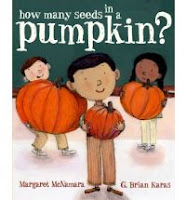Whether you prefer vanilla, chocolate, red velvet, or even the pineapple-upside-down variety, grab a slice of your favorite cake to celebrate this delicious day! Happy National Cake Day!
Well even though it isn't Cake Day here in Australia, I certainly thought of cake this week as I was shelving the hundreds of books that are coming back from classrooms at the end of the school year. I needed a treat on Friday afternoon, so splurged on a piece of honey roll. My favourite looking cakes in books though are these two. I don't know why because both have copious amounts of cream and strawberries, two things I am not overly fond of, but they do look very decadent and delicious.
The first is 'made' by Kerry Argent in her illustrations for Gail Jorgensen's Gotcha! I can't find any pictures of it on the web so you'll have to find the book and read it. Here a group of bears are having a birthday picnic and are just about to cut the cake when the party is rudely interrupted by a "big, black, beastly fly." A pursuit of this fly then ensues and there is a wild romp all over the countryside before coming back to the cake.
 The second is 'made' by Janet Stevens in the book Cook-a-doodle doo! This too is a story where animals get to cook and eat the cake, but at least the cake is on the cover and you can see what you are missing. Both of these books are great read- alouds for sharing with very young children.
The second is 'made' by Janet Stevens in the book Cook-a-doodle doo! This too is a story where animals get to cook and eat the cake, but at least the cake is on the cover and you can see what you are missing. Both of these books are great read- alouds for sharing with very young children.



















